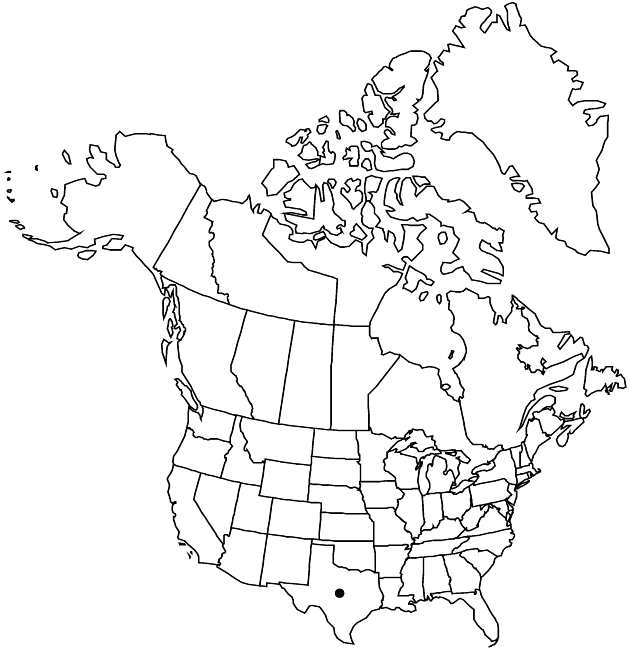Difference between revisions of "Astranthium robustum"
Publ. Mus. Michigan State Univ., Biol. Ser. 2: 521. 1965.
Common names: Texas western-daisy
Endemic
Basionym: Astranthium integrifolium var. robustum Shinners Field & Lab. 18: 158. 1950
Treatment appears in FNA Volume 20. Treatment on page 204.
FNA>Volume Importer |
imported>Volume Importer |
||
| (2 intermediate revisions by 2 users not shown) | |||
| Line 8: | Line 8: | ||
}} | }} | ||
|common_names=Texas western-daisy | |common_names=Texas western-daisy | ||
| + | |special_status={{Treatment/ID/Special_status | ||
| + | |code=E | ||
| + | |label=Endemic | ||
| + | }} | ||
|basionyms={{Treatment/ID/Basionym | |basionyms={{Treatment/ID/Basionym | ||
|name=Astranthium integrifolium var. robustum | |name=Astranthium integrifolium var. robustum | ||
| Line 52: | Line 56: | ||
|publication title=Publ. Mus. Michigan State Univ., Biol. Ser. | |publication title=Publ. Mus. Michigan State Univ., Biol. Ser. | ||
|publication year=1965 | |publication year=1965 | ||
| − | |special status= | + | |special status=Endemic |
| − | |source xml=https:// | + | |source xml=https://bitbucket.org/aafc-mbb/fna-data-curation/src/2e0870ddd59836b60bcf96646a41e87ea5a5943a/coarse_grained_fna_xml/V19-20-21/V20_454.xml |
|tribe=Asteraceae tribe Astereae | |tribe=Asteraceae tribe Astereae | ||
|genus=Astranthium | |genus=Astranthium | ||
Latest revision as of 20:03, 5 November 2020
Annuals, taprooted. Stems usually 3–8, decumbent-ascending, sometimes 1, erect. Leaves: basal and proximal cauline 20–45 × 5–11 mm. Involucres 4–6.8 mm. Ray florets 18–35; corolla laminae white or abaxially lavender, often drying pinkish, 8–13 mm. Disc floret corollas 3.2–3.8 mm. Cypselae 1.4–2.1 × 0.7–1.2 mm, faces minutely, glandular-papillate-pebbly, uniformly sparsely to moderately glochidiate-hairy. 2n = 6.
Phenology: Flowering Mar–Jun.
Habitat: Disturbed sites in sandy or rocky soil, mesas, canyons, pine flats, roadsides, ditches
Elevation: 800–1400 m
Discussion
Astranthium robustum is known only from the trans-Pecos region.
Selected References
None.
Lower Taxa
None.
